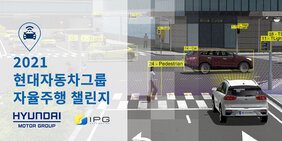Since 1995, the Hyundai Motor Group organizes a competition for Korean university teams that allows them to put their creative ideas for the future of automotive technology into practice on a vehicle. The competition has been focusing on the development of autonomous driving functions since 2010. For the first time, in 2021, a “Virtual Challenge” takes place before the final competition. 23 student teams are going to compete in February to present the autonomous driving functions that they have developed virtually. The Hyundai Motor Group has chosen CarMaker as a development tool for the competition. The top 6 teams will advance to the final competition.
For the "Virtual Challenge", IPG Automotive Korea provides free CarMaker licenses for the participants, as well as exclusive support. The participants have access to a variety of workshops, and they can address all their questions to the experts from IPG Automotive online or via phone.
The teams have to complete a competition mission. To solve it, all participants benefit from the extensive CarMaker features to build virtual prototypes and the virtual environment, to implement test scenarios as well as to parameterize their sensor models.
In the final competition, the goal of the 6 winning teams of the "Virtual Challenge" will be to implement the virtually developed autonomous driving functions in the real KIA NIRO EV by October 2021 – to prove their ability to compete in the real world as well.
